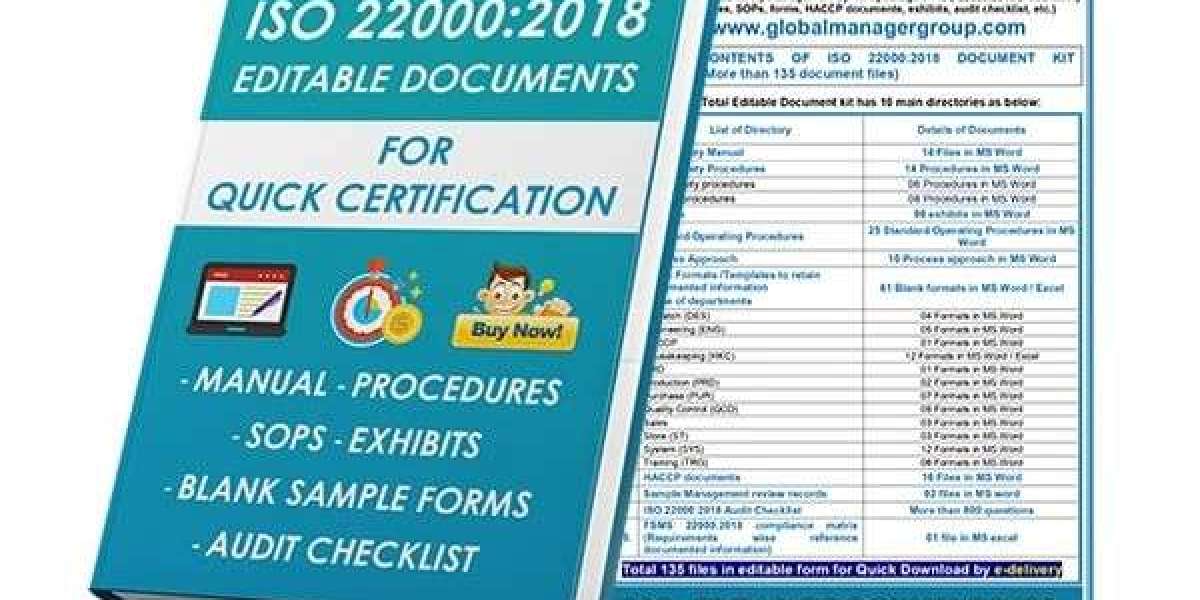Implementing an effective ISO 22000 food safety management system (FSMS) is essential for companies across the global food supply chain, including manufacturers, processors, exporters, and packaging firms. Punyam.com’s ISO 22000 consultants, drawing on decades of consulting experience, share eight practical strategies to guide successful implementation. These strategies cover leadership, planning, documentation, training, and continuous improvement, all aimed at embedding a robust food safety culture throughout the organization.
- Ensure Strong Leadership Commitment
Effective ISO 22000 implementation begins with top management demonstrating commitment to food safety. Leaders should endorse the food safety policy, allocate necessary resources, and integrate safety objectives into the business strategy. By championing a culture of safety and accountability, management ensures that every department understands its role in hazard prevention. Visible actions—such as participating in food safety audits and reviewing performance data—reinforce leadership’s commitment to the FSMS.
- Conduct a Comprehensive Gap Analysis and Risk Assessment
Before implementing ISO 22000, organizations should perform a thorough gap analysis and risk assessment. This means comparing existing practices to the standard’s requirements and applicable regulations, and identifying areas needing improvement. Using HACCP methodology, teams analyze biological, chemical, and physical hazards at each step of production or distribution. Mapping process flows and supplier inputs helps pinpoint critical control points and prioritize controls to address identified risks.
- Establish a Dedicated Food Safety Team
A cross-functional food safety team is essential to the FSMS. This team should include representatives from quality, production, engineering, procurement, and other relevant areas to ensure diverse expertise. Clear definition of roles and responsibilities is key: every team member must know their part in hazard analysis, monitoring, and documentation. Regular meetings and effective communication channels keep the team aligned and enable prompt response to any food safety issues.
- Define Clear Food Safety Policies and Objectives
A formal, written food safety policy is the foundation of ISO 22000. Top management should document and communicate the organization’s commitment to preventing food safety hazards and meeting all legal and regulatory requirements. From this policy, the team derives specific food safety objectives — for example, reducing contamination incidents or improving recall response times.
- Develop and Document the FSMS Thoroughly
Robust documentation is vital for ISO 22000 compliance. Organizations must develop a food safety manual, procedures, work instructions, and records that address all relevant ISO 22000 clauses. Key ISO 22000 documents include the hazard analysis plan, critical control point monitoring protocols, and verification procedures. Clarity and control are important: all documents should be easy to understand, consistently formatted, and subject to version control. Maintaining records of monitoring data and corrective actions serves as evidence that the FSMS is working as intended.
- Implement Robust Prerequisite Programs (PRPs)
Prerequisite programs (PRPs) are the basic operational and hygiene conditions that support food safety. PRPs include facility sanitation, equipment cleaning schedules, pest control, allergen management, equipment maintenance, and personnel hygiene protocols. These programs form the foundation of the FSMS by reducing contamination risks before they occur. Organizations should tailor PRPs to their specific processes and products, and review them periodically to ensure they remain effective and aligned with ISO 22000 requirements.
- Provide Training and Build Awareness Across the Organization
Training and awareness are crucial for effective FSMS implementation. All employees should receive initial and refresher training on food safety principles, personal hygiene, and the organization’s FSMS procedures. Specialized training should be provided to staff in critical roles — for example, personnel responsible for monitoring critical control points or handling hazardous materials. Training internal auditors and managers ensures that audits and reviews are carried out competently. Encouraging a culture of accountability and continuous improvement—where employees proactively report and resolve potential issues—further strengthens the FSMS.
- Monitor, Audit, and Continually Improve the FSMS
Establishing robust monitoring and improvement processes ensures the FSMS remains effective. Organizations should define key performance indicators (such as audit nonconformities, corrective action rates, or product test results) and review them regularly. Internal audits and management review meetings are vital for checking compliance and effectiveness. By following the Plan-Do-Check-Act cycle, companies take corrective actions based on audit findings and stakeholder feedback. Whenever processes change or new hazards are identified, organizations should update the hazard analysis and FSMS procedures accordingly.
Adopting ISO 22000 requires systematic planning and commitment at all levels of the organization. By applying these eight strategies — from top-level leadership and thorough analysis to dedicated teams, clear policies, comprehensive documentation, strong PRPs, targeted training, and rigorous monitoring — food businesses can build a resilient FSMS.



